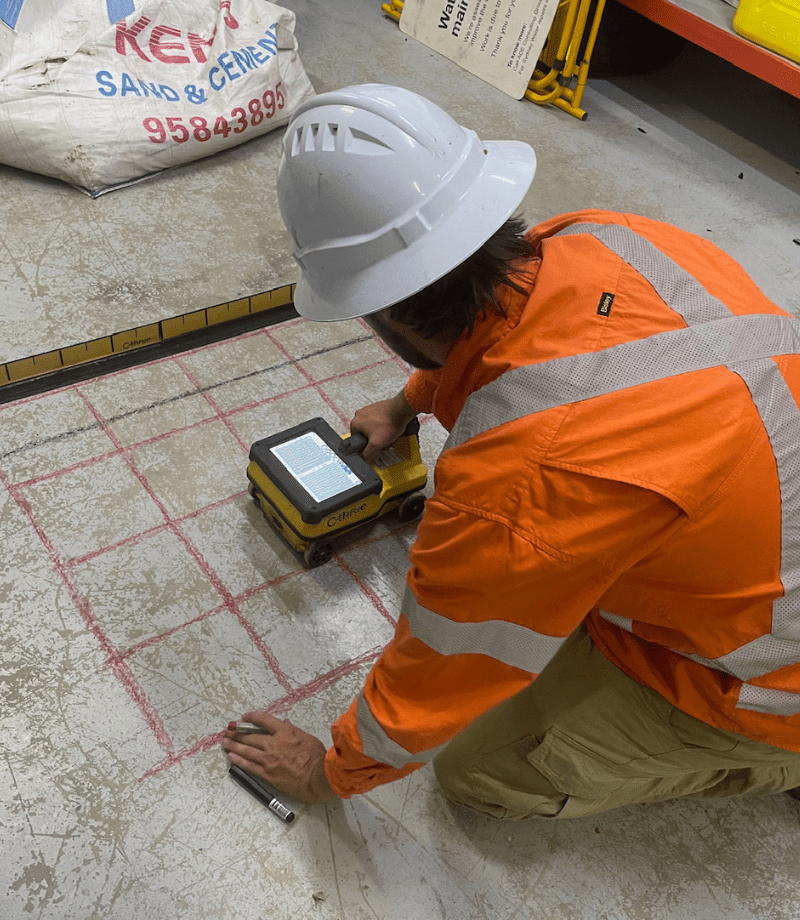Enhancing Task Preparation and Execution Through Advanced Concrete Scanning Strategies
In the realm of project preparation and foresight, accuracy and implementation are vital aspects that can make the difference in between success and problems. Advanced concrete scanning methods have actually arised as an advanced tool set to boost the standards of task monitoring within the building market.
Benefits of Advanced Concrete Scanning Strategies

Improved Precision in Job Evaluations
Enhancing task assessments through innovative concrete scanning strategies substantially boosts the precision and integrity of building and construction analyses. By utilizing sophisticated scanning modern technologies such as ground-penetrating radar (GPR) and 3D imaging, job groups can currently obtain in-depth understandings right into the problem of concrete structures, identifying potential defects or weak points that might not be noticeable to the nude eye. This improved degree of accuracy in job analyses enables construction professionals to make even more enlightened choices relating to repair service and maintenance techniques, bring about improved overall task results.
Moreover, the boosted accuracy in job analyses achieved with innovative concrete scanning methods helps in minimizing the risk of unexpected issues during the construction stage. By proactively identifying covert anomalies within concrete frameworks, such as rebar corrosion or spaces, project groups can deal with these problems beforehand, avoiding pricey hold-ups and rework later on in the job lifecycle. Ultimately, the boosted accuracy in project analyses helped with by sophisticated concrete scanning strategies adds to better efficiency, cost-effectiveness, and quality in building tasks.
Early Recognition of Architectural Difficulties
Very early detection of architectural difficulties plays an important function in ensuring the stability and security of concrete structures throughout the building process. Recognizing possible issues at an early stage permits timely intervention, stopping costly rework, timetable delays, and safety dangers. Advanced concrete scanning methods, such as ground-penetrating radar (GPR) and 3D imaging, enable task groups to reveal concealed defects, gaps, support layout inconsistencies, and various other abnormalities that could jeopardize the structure's stability.
By executing these strategies throughout the preparation and implementation stages, building professionals can proactively address architectural challenges before they escalate into major problems. For example, identifying inadequate concrete cover over support bars beforehand can protect against rust and structural weakening in the future - RainierGPR Service Areas. In addition, recognizing variations in concrete thickness or density can aid maximize product use and make certain consistent toughness properties throughout the structure

Eventually, very early identification of structural obstacles via innovative concrete scanning not only boosts the total top quality and durability of the construction but likewise adds to a much safer built environment for passengers and individuals.
Boosted Security Actions in Construction
The execution of durable safety procedures is crucial in the construction sector to alleviate risks and secure the wellness of workers and stakeholders. To improve safety procedures, building and construction business are significantly adopting technical advancements such as wearable gadgets that keep an eye on employees' essential indicators and identify potential health and wellness concerns in real-time. By focusing on safety through the unification of sophisticated modern technologies and discover this info here extensive training programs, construction tasks can substantially reduce crashes and develop a safe functioning atmosphere for all involved.
Streamlining Job Monitoring Processes
To enhance operational effectiveness and ensure task success in the building sector, an emphasis on enhancing project monitoring procedures is crucial. By carrying out reliable task monitoring processes, building and construction tasks can minimize hold-ups, minimize costs, and enhance total productivity.

Final Thought
Finally, the application of sophisticated concrete scanning techniques uses numerous advantages for project preparation and execution. These strategies supply better accuracy in project evaluations, early identification of architectural challenges, enhanced security procedures in building, their website and structured task management processes. Including these techniques into project process can eventually cause much more efficient and effective outcomes in building tasks.
Eventually, the enhanced accuracy in project assessments facilitated by sophisticated concrete scanning methods adds to greater efficiency, cost-effectiveness, and high quality in building jobs. RainierGPR Service Areas.
To enhance operational efficiency and guarantee job success in the construction market, a focus on streamlining task administration processes is crucial. By applying efficient project monitoring processes, visit their website construction tasks can decrease hold-ups, reduce expenses, and boost overall efficiency. By enhancing job management procedures with modern technology integration, clear communication, and data-driven approaches, building and construction tasks can attain greater efficiency, cost-effectiveness, and successful results.
These techniques provide enhanced accuracy in project evaluations, early recognition of structural obstacles, improved safety and security measures in building, and streamlined task monitoring processes.